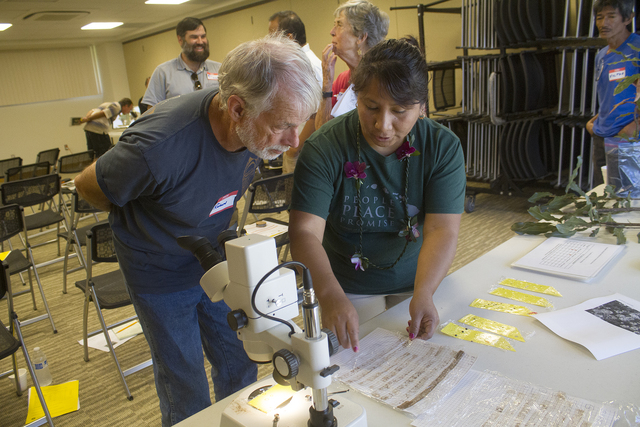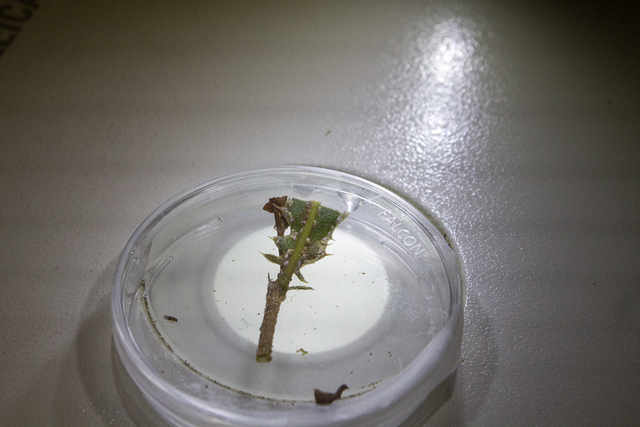Researchers at the University of Hawaii College of Tropical Agriculture and Human Resources are working with local growers to combat an introduced insect that damages macadamia trees. ADVERTISING Researchers at the University of Hawaii College of Tropical Agriculture and Human
Researchers at the University of Hawaii College of Tropical Agriculture and Human Resources are working with local growers to combat an introduced insect that damages macadamia trees.
During a workshop Tuesday in Hilo attended by macadamia farmers as well as representatives from the state Department of Agriculture, CTAHR professor Mark Wright and junior researcher Rosemary Gutierrez presented findings from a series of studies focused on controlling the spread of macadamia felted coccid.
The insect first appeared on Hawaii Island in February 2005, when an infestation was found on a South Kona farm. It is unclear how it arrived, but during the ensuing years the coccid spread around the island and has been identified at sites from South Point to Waimea.
Like the macadamia tree itself, the coccid is native to Australia. It is found only on the smooth and rough-shelled varieties of macadamia and feeds on tree sap. When there are macadamia felted coccid infestations on a tree, they cause dieback of branches and leaves, reducing the overall nut yield.
Wright described methods of sampling trees to determine the extent of an infestation — typical infestations are patchy clumps of coccid colonies — and provided an overview of how best to control an outbreak.
Work in South Kona found that a horticultural oil known as TriTek had a “highly significant” impact on killing off the adult coccid population, while a type of insect growth regulator called Applaud could control juveniles.
One way of managing infestations is fighting back with help from natural predators.
“We need to find a way to increase the effectiveness of biocontrol,” Wright said.
Macadamia growers can create environments more attractive to predators such as ladybugs by incorporating flowering plants nearby and trimming back tree canopies. This provides additional food sources for predators in addition to choice environments.
“It can be very effective, and predictably effective,” Wright said.
In studies conducted in South Kona and Pahala, pruning treatments combined with more flowering plants created a rise in the number of predatory beetles that frequented the macadamia groves, and an “appreciable dropoff” in the coccids.
“There seems to be a beneficial effect in doing this,” Wright said.
The pruning treatment also increased the number of parasitic wasps that use the coccids as hosts, which led to population decreases in the insect’s earlier life stages.
A tiny parasitic wasp native to Australia that uses macadamia felted coccids as a host is going through the Department of Agricultures quarantine screening to see if it can be introduced in Hawaii.
Gutierrez also is researching methods of using native fungi to kill off coccids. Early findings indicate that fungi can infect and kill not only adults but eggs and pupa.
“There are promising alternatives to chemical insecticide,” she said. Natural enemies are “easy and fairly cheap to cultivate.”
Still, Gutierrez said, “We have a lot of work to do yet.”
Email Ivy Ashe at iashe@hawaiitribune-herald.com.




